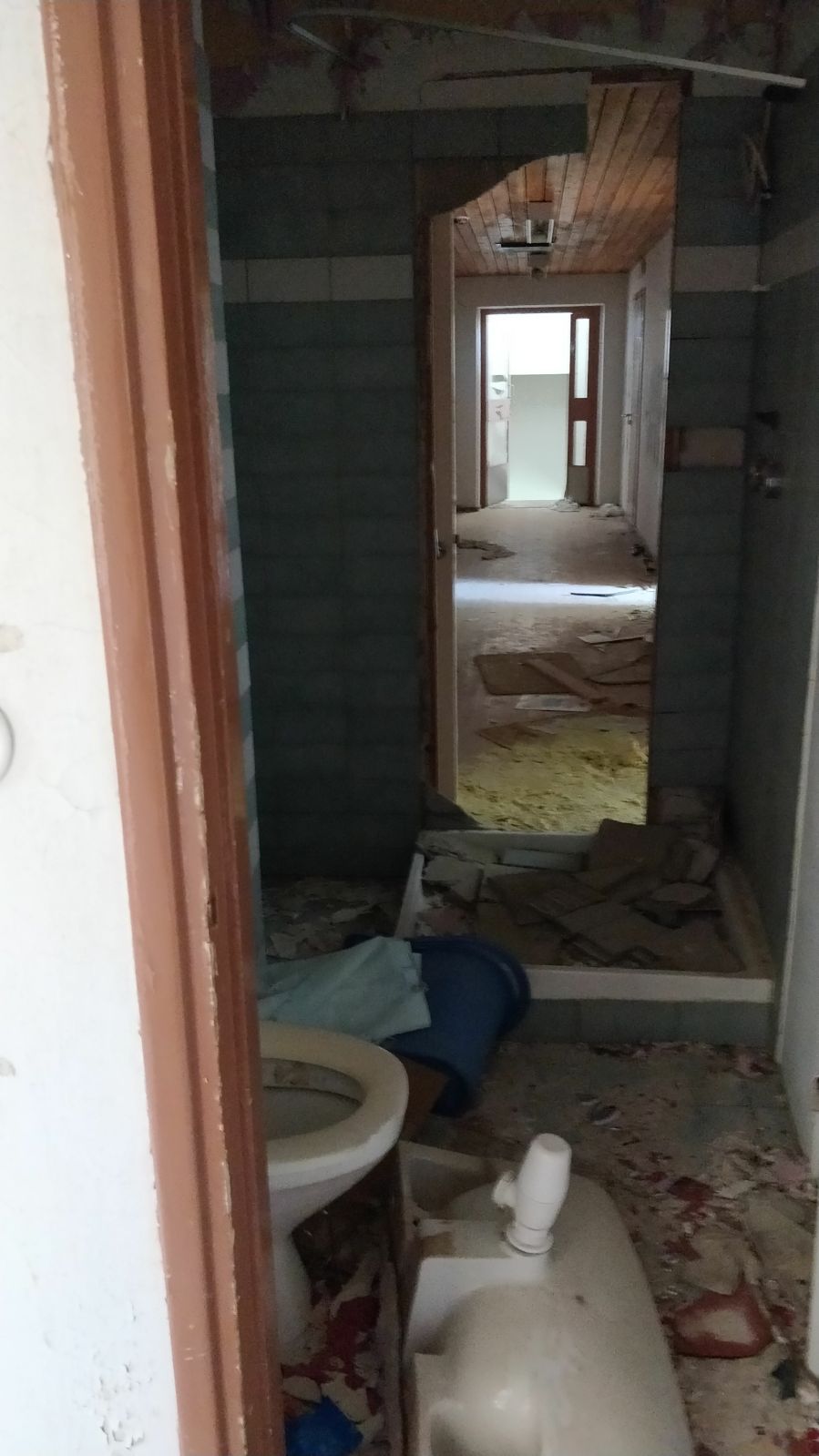A couple of days into the vacation. Shot two rolls in the Hong Kong and one roll in the Tokyo so far. Been shopping a bit, found acros for lots cheaper than back home!
Svema TSNL 65 pt.2
This is the second part of my experiments with Svema TSNL which should not really be processed in C41 since it expects an ancient process called C22. Read the first part here.
This time i developed at 25.5C for 11min, agitated for the first minute straight and then about every 30s an inversion. About twice as much agitation as last time.
I blixed for 11 minutes instead of 10min (or 6+4 really), also more agitation.
Exposed at around ISO12.
I'd say that the images are more "normal looking", but still have this weird monochrome picture overlayed over a weird random color cast. I kinda liked the extreme contrasty color blotches of last time, this looks more.. subdued.. I still think the silver did not get fixed away, either my blix has gone bad or I should be blixing for much longer. But difficult to judge, could be just harsh base fog.
Here are some example pics








Timelapse of me developing a roll of Berger Pancro 400
Rodinal, 1+50. Agfa fix that is 10+ years old but works fine, Adox wash aid.
Which BW developer is the best for a beginner?
Hands down Kodak D76. Then use it one-shot with 1+1 dilution. That means that after you've mixed your solution (this is called the stock), when you develop a roll you dilute it 1:1 with more water. When this is done, the shelf life of the solution is drastically reduced, so you use it only once, then you discard it (don't pour chems down the drain!)
Why D76 you might ask? Because it's forgiving, it's cheap, it lasts a long time and you can find development times for pretty much every type of film out there easily. If you're new to this, don't make things harder for yourself. The difference between film developers is not big enough for you to care that much about the first year or two. Focus on the photography at this point instead.
What brand of fixer should I use for my BW development?
It doesn't matter. I have used probably around of dozen different types of fixers during the years and I have never noticed any difference between them. They all seem to work just fine. I try to use known brands such as Kodak or Ilford, but mainly I just compare the price per liter and try to take one of the cheapest ones.
The fixing time is not that critical either, just make sure you fix for enough time. I usually fix the film leader I cut off when loading the film into the tank while I do the development. Then I take twice the time that it took for the leader to go clear. And nowadays I reuse the fixer until the fixer starts to smell/goes murky/has particles floating around.
Svema TSNL 65
So I got this roll of an old russian color film called Svema TSNL 65. There is not much info about it online, but from what I gathered it uses an old process called C-22. Not C-41 as we are used to. Wikipedia says a little bit: "The development of the film material was carried out at temperatures of around 75°F (24°C), making the process incompatible with the more modern C-41 process, which uses a temperature of 100°F (38°C)"
I found some forum posts about people trying to develop these kinds of films in C41 and end up with the emulsion in their hands. Someone had experimented with lower temperatures and longer times, so I thought I'd try this route too myself.
The first thing I noticed was that the film came in just a roll, no cassette. So luckly I had already some cassettes I could put this roll in. Pretty easy, it came rolled backwards so just put the end bit into the roll and started rolling tight, then put it into the cassette and off we went. My Pentax MX did not like this film, it was too stiff and britle. When I loaded it and turned the winder, the film straight snapped off. The Canonet works better with these kinds of issues since it has a different kind of mechanism to advance the film.
I shot it at around ISO12, since GOST 65 is ISO80-64, that makes it around 2 stops more. The film expired in April 1982, so according to the one stop per decade rule, that would make it a little bit too little. And my initial experiments show this to be correct, another stop would have been better.
So, results. I got pictures, but it seems the color couplers are just going bonkers from the C41. It's kinda like a b/w image with random flows of colors going through it. I developed at room temperature for 10 minutes with very careful agitation as to not to upset the emulsion. I then did a mistake and blixed it for a mere 6 minutes. At room temperature, this was not at all enough. I did another round of blixing for 4 minutes, but this was STILL not enough as I can see some residual silver. Something also went weird when drying, a big piece of the negative got a weird red stain, which might indicate a fixing problem.
However, I am in any case very pleased with the results since I love to experiment and document these kinds of things. I am sure there are still tens of thousands of rolls of the stuff sitting somewhere in a forgotten warehouse. This was just half of one roll, so more will follow soon. What I think I'll do next time is warm up the liquids just a tiny bit to 24C, agitate at bit more normally, develop a bit longer, and then blix for at least 10min straight. I will also shoot it at ISO8.
Here are some pictures. Enjoy the cosmic colors.






Probably my favourite this one.
Pohjola-opisto
Pohjola-opisto was a school that was in use between 1956 and 2002, in a town called Haukipudas near the city of Oulu. Since the year 2010 the buildings have been empty and slowly but surely are deteriorating due to vandalism and weather.
I was there in the summer of 2017 and shot these pictures with my trusty Hasselblad and Diana F with some slide film that I cross processed.
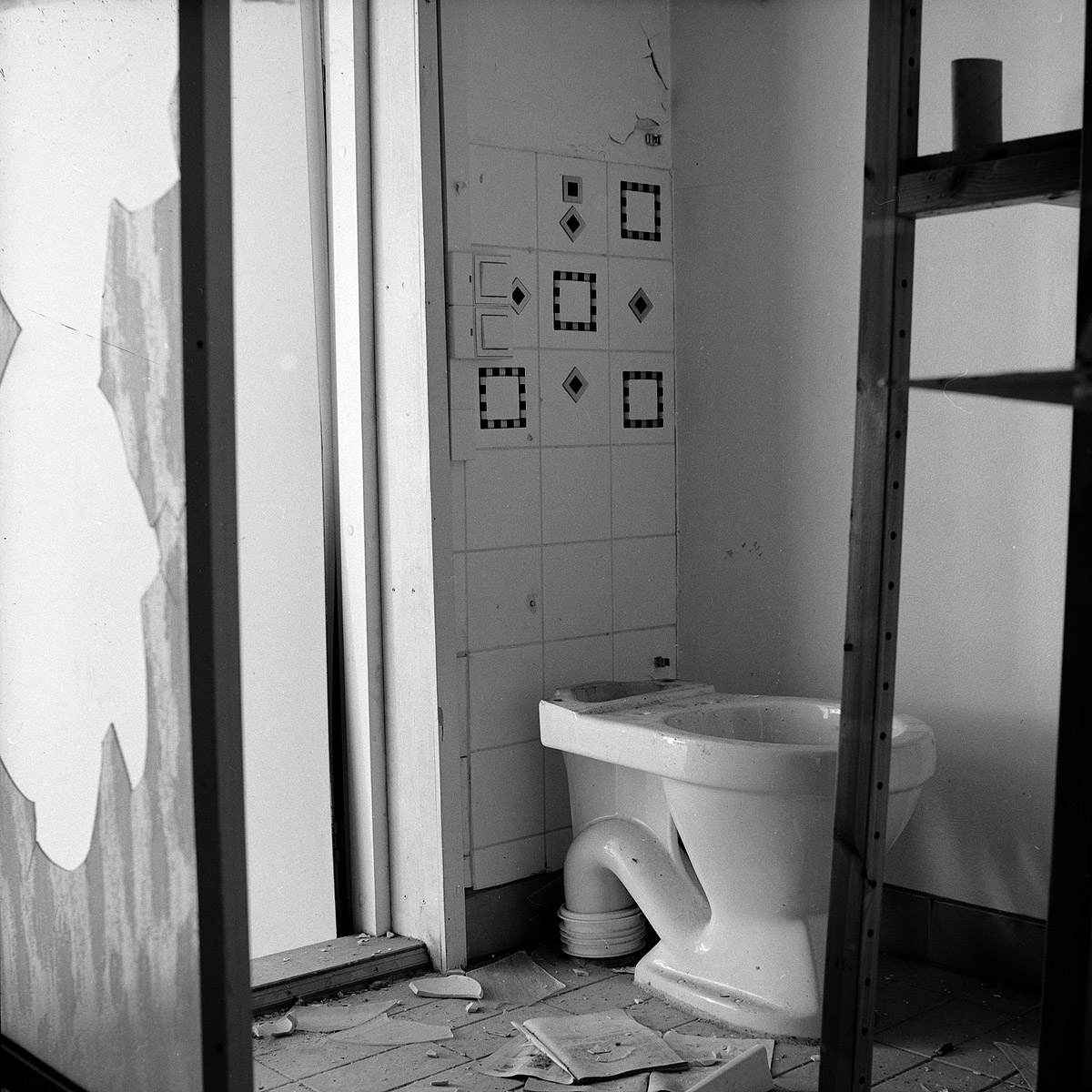
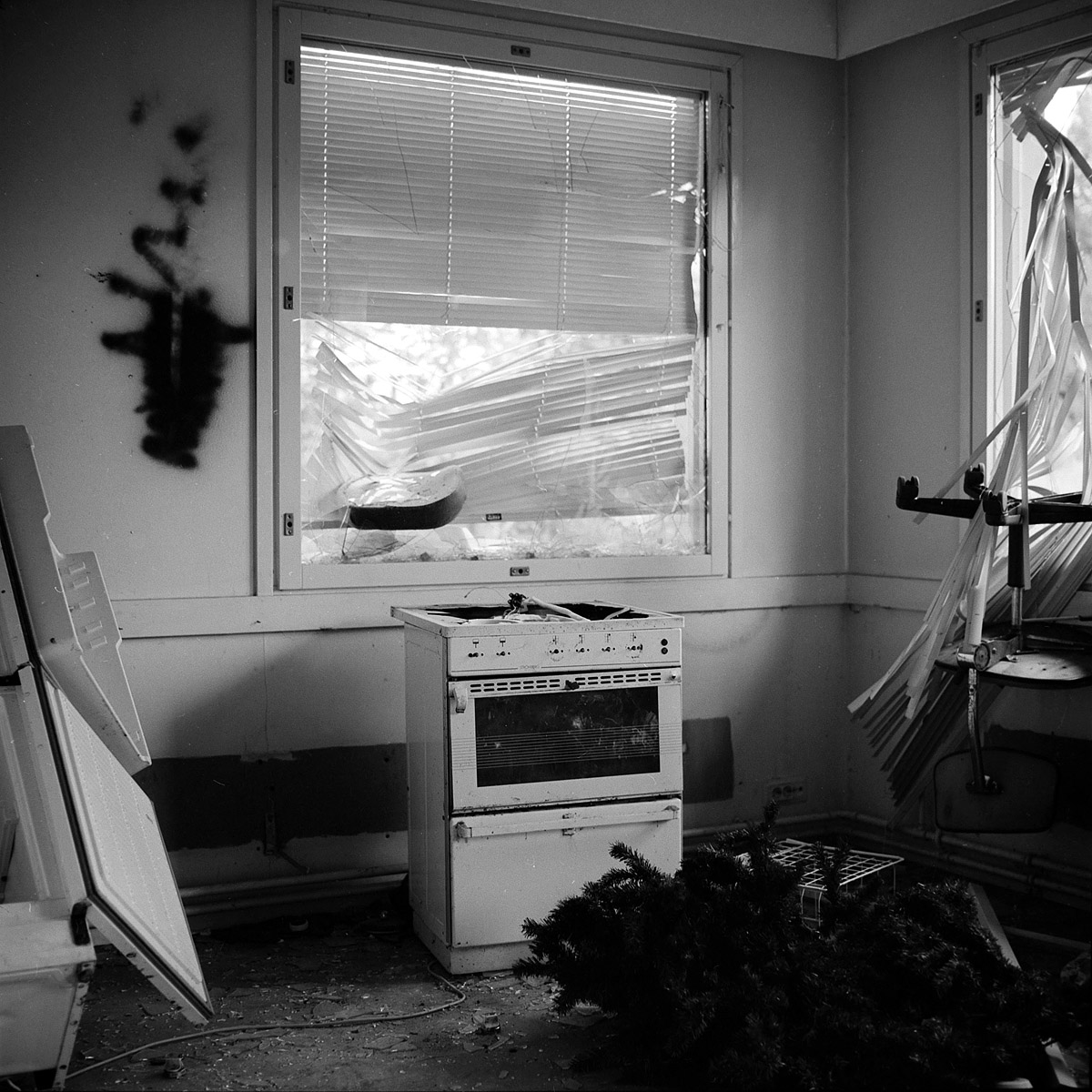

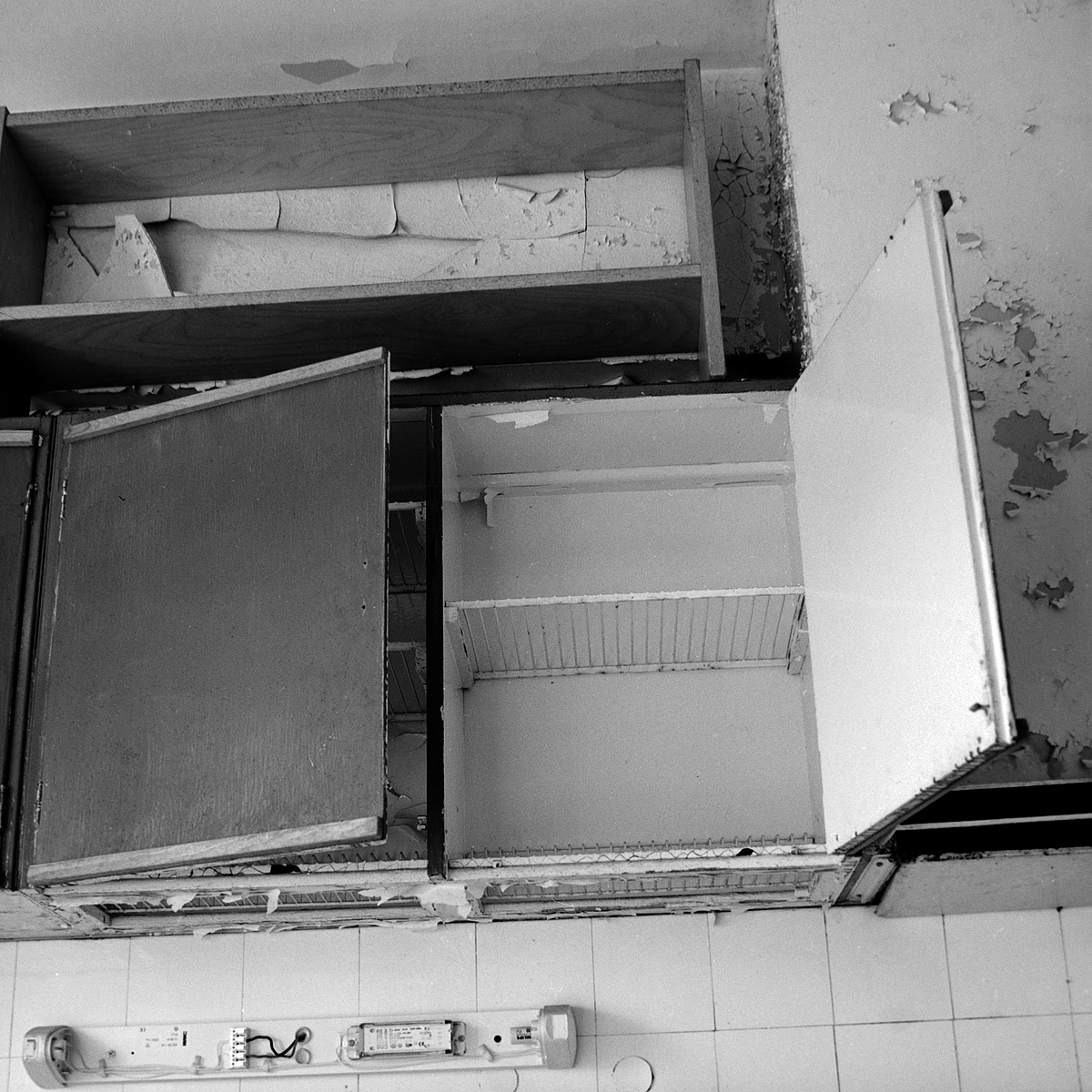
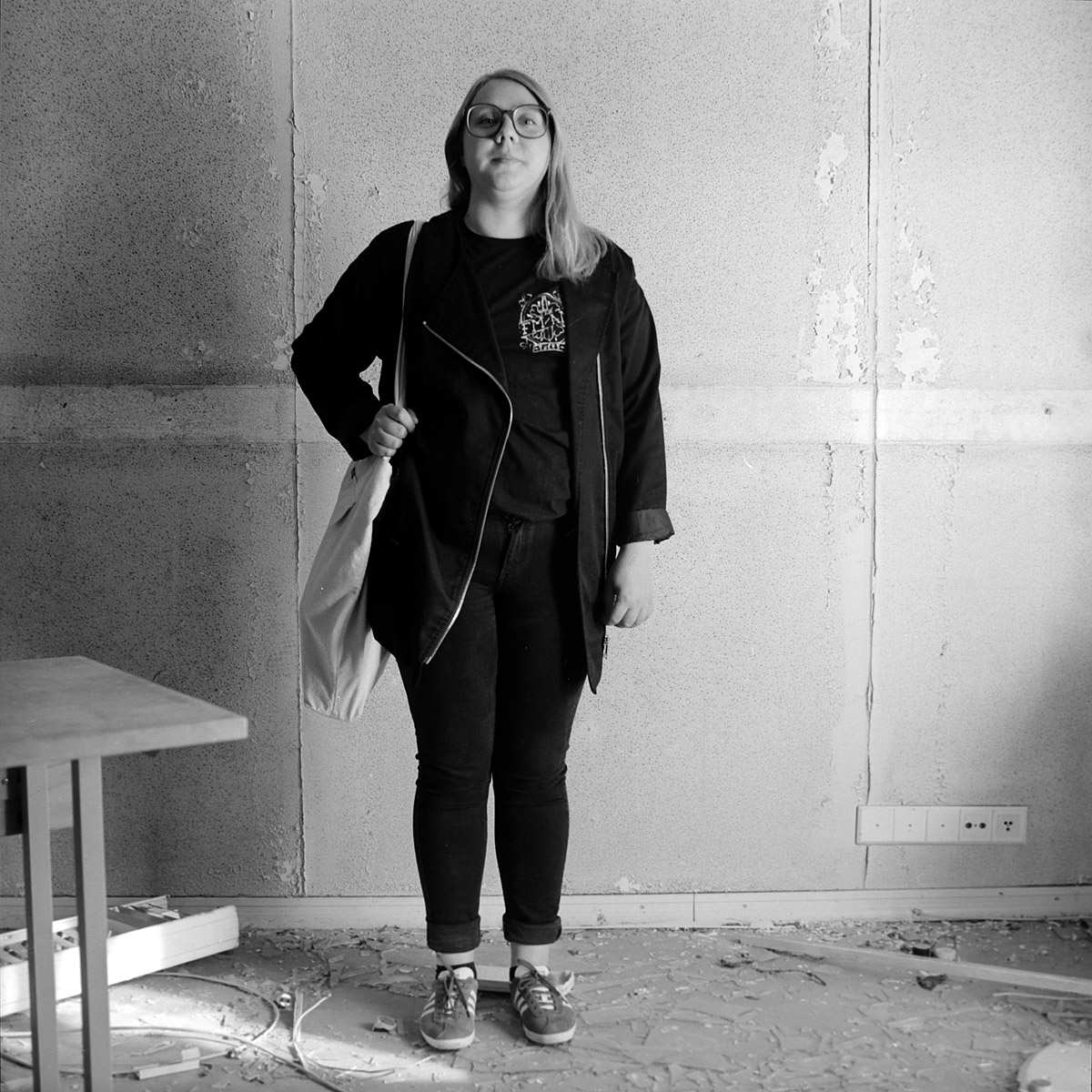

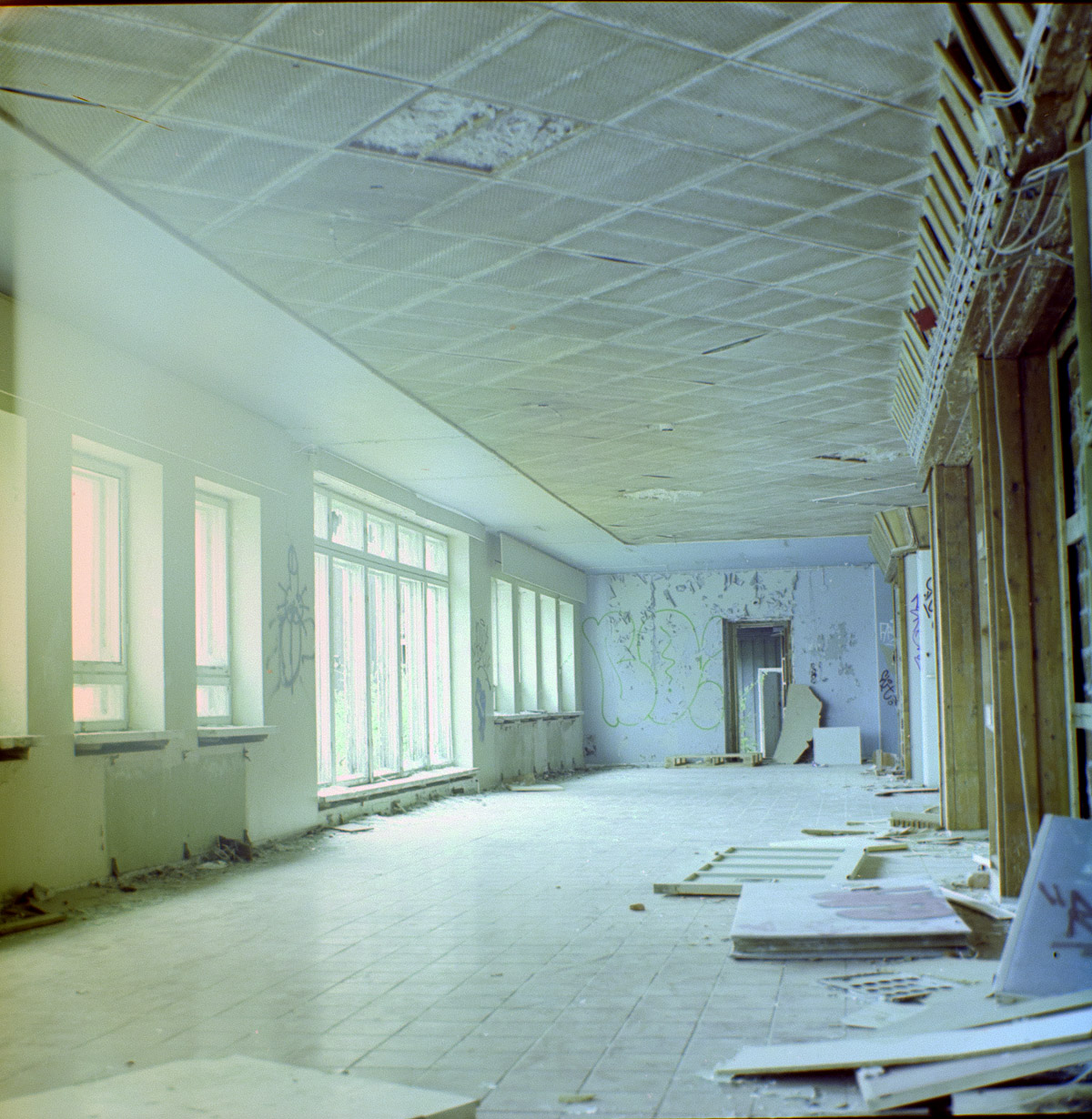


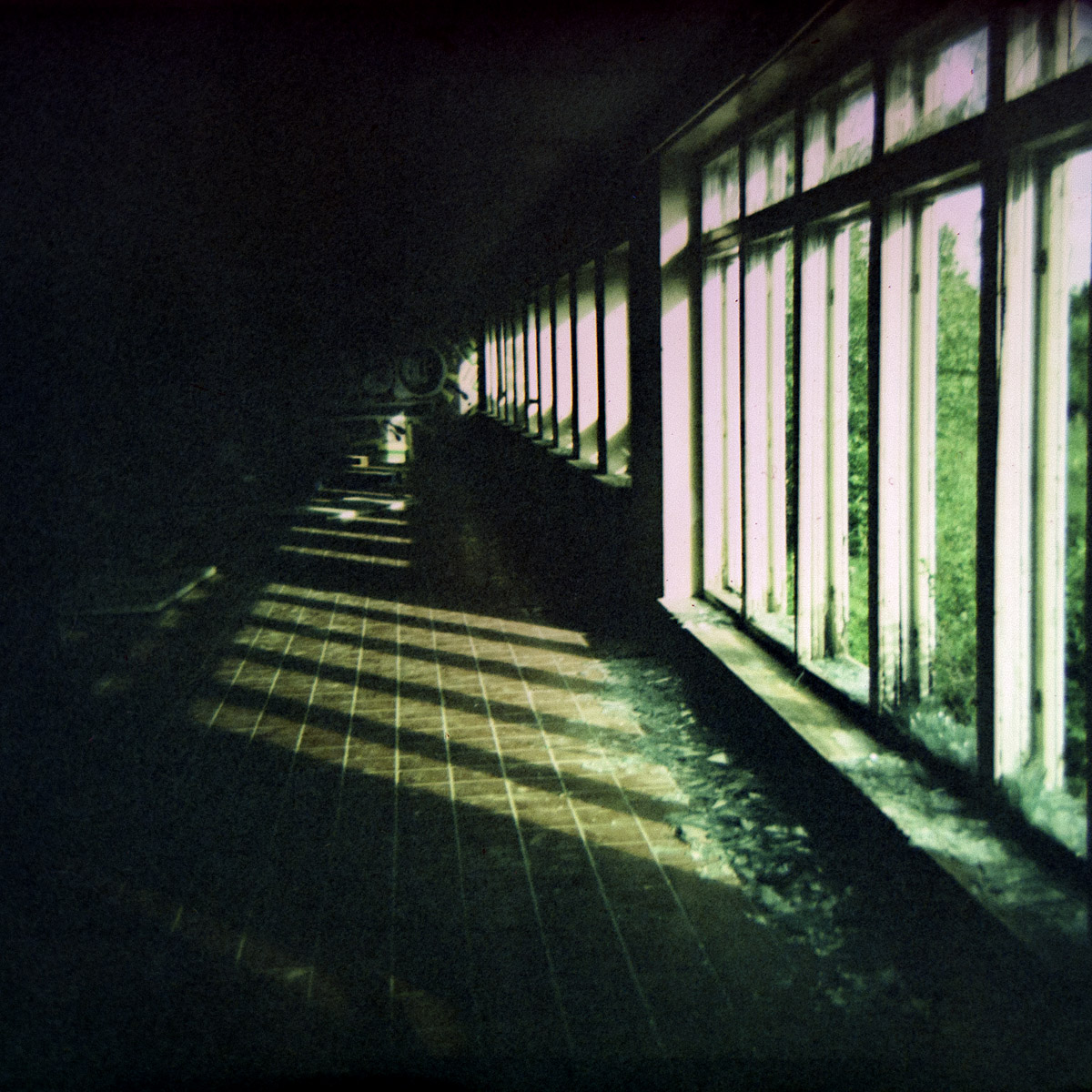
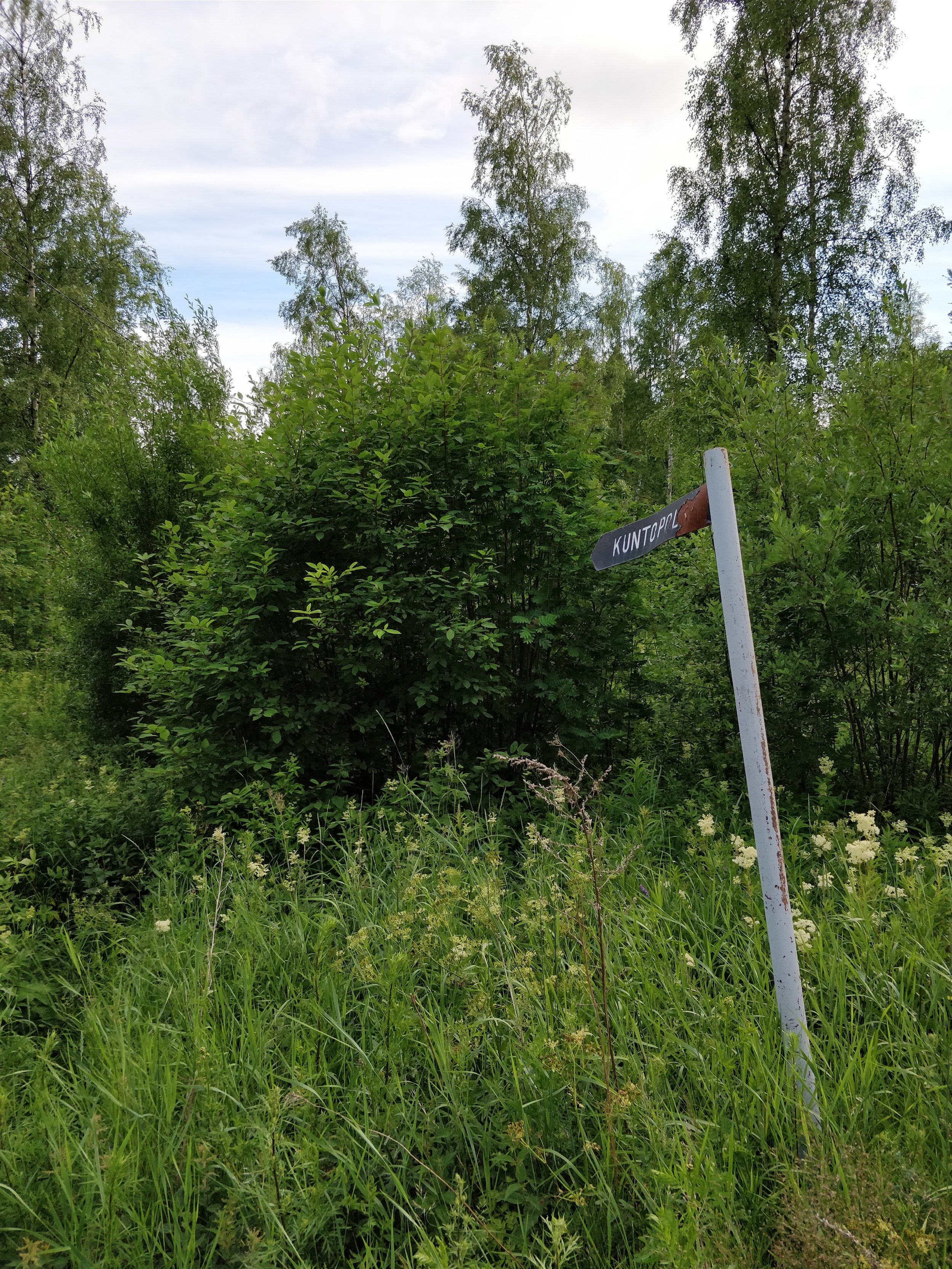
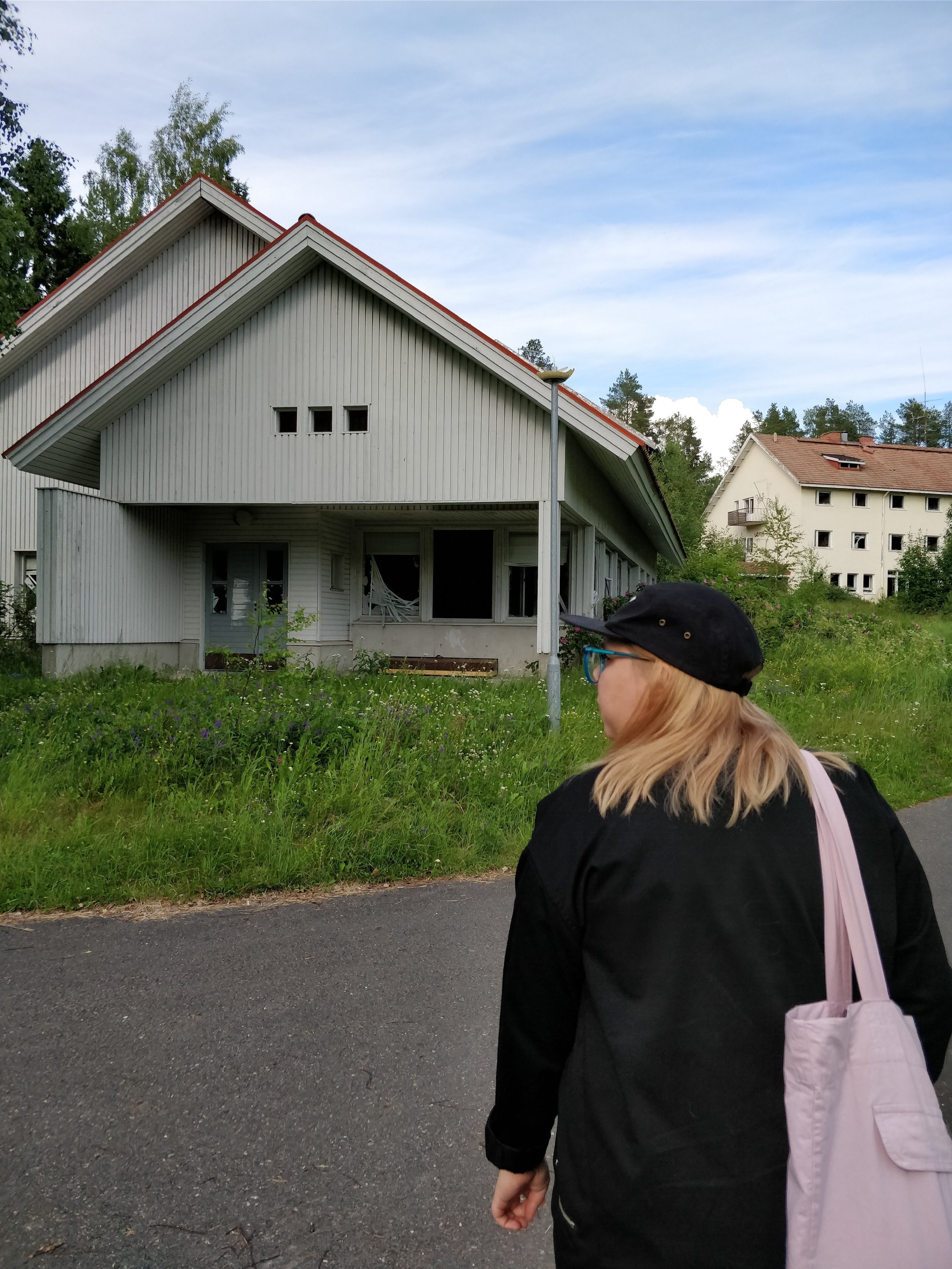


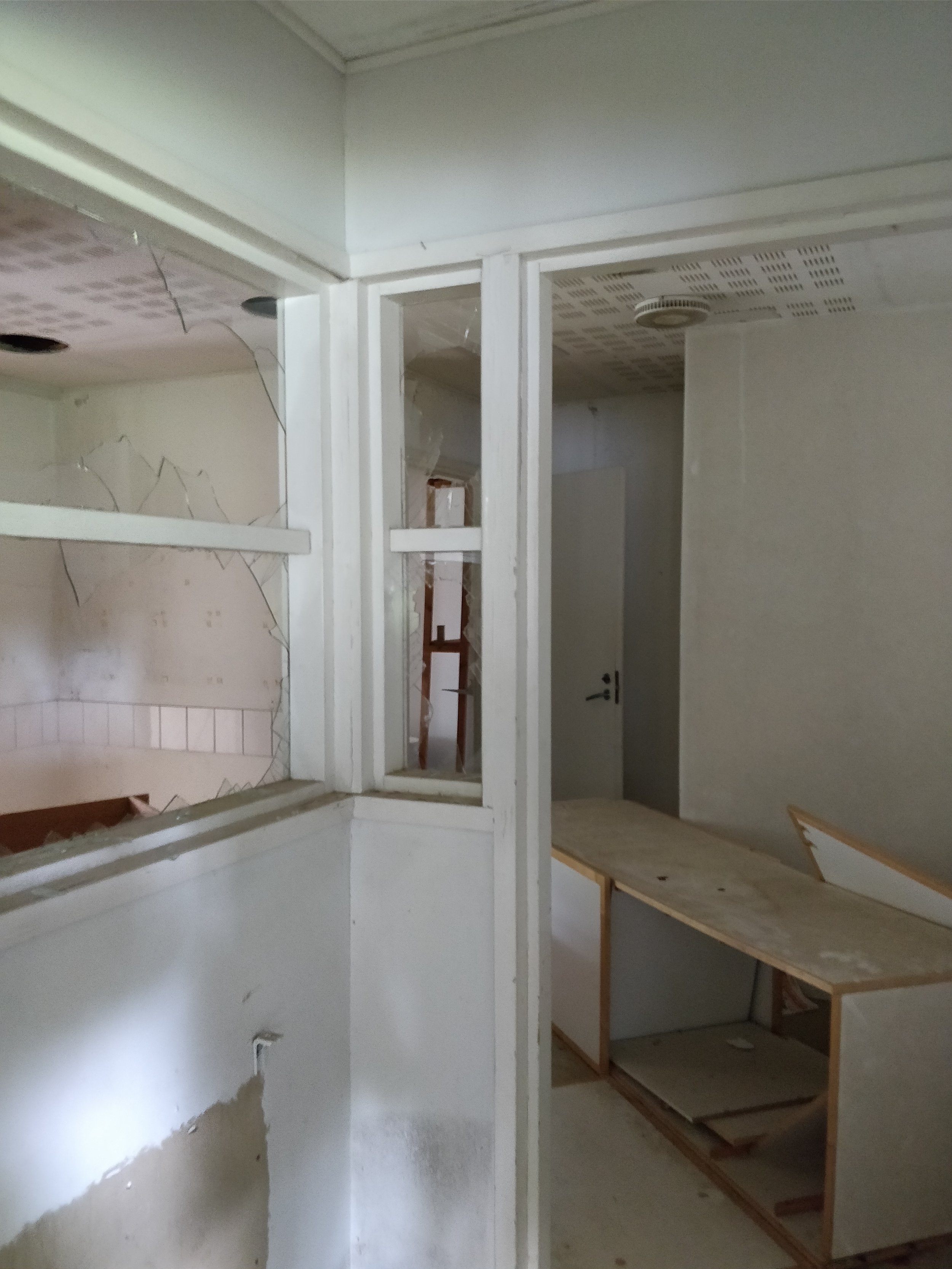


Digital pictures above taken with my Oneplus5.
Besides these pictures, I found the remnants of what seemed to be their photo lab. There was a huge amount of negative sleeves just lying around in the room. A bit naughty of me, but I took a few of them with me home to scan. If you recognize anybody in the pictures, I would love to know more about the people and the pictures. They were most likely taken in the mid 90s. They were in very bad shape, I tried washing them the best I could, but as you can see they have some serious damage.
The finnish wikipedia page for the school is here.








Lotta
We were good friends as young adults. She always posed when I picked up my camera except this one time when I was not allowed to shoot since she was not wearing her makeup. It's my favorite portrait of her. We haven't spoken in about 10 years.
Do you need a stop bath for b/w film development?
Short answer - no.
Well then, why do stop baths even exist you might wonder. Well, it's like this - when you pour out the developer you don't get every drop of it out. When you pour water in, it's just diluting the stuff that was in. Even if you're fast, this might take 15-20 seconds. If your development time in total is just a couple of minutes, then this will have a huge impact on your results. In those cases you do need a stop bath, to kill the development process instantly.
So long answer, yeah, it's good to use it if your development time is <5min. I have never used such a short time.
When it comes to paper, it's more about prolonging the life of the fixer and not bringing in any active developer into that tray.. so why not, stop baths are cheap.
C41 Tips and tricks
Here are some things I have learnt the hard way or found online and was baffled I didn't previously know:
- You need a good thermometer. You might think you have a great one, but buy another one and check that they show the same temperature. I had TREE thermometers that showed all different values, and not by a small amount either. The most professional looking one was always about +5C over. It doesn't matter that much in b/w development but in C41 you gotta have accurate temperature control. I ended up buying an expensive digital one, don't regret it at all.. I recommend everybody to do this too.
- You have to develop at 38C +/- 0.3C. That is very difficult. If you pour your 38C developer liquid into a room temperature tank, you will get an about 2C drop in temperature, in the first seconds. Then during the development, you will probably drop another 2C without a water bath. I recommend starting at 38,3C and then have a water bath that is around 40C to dunk the tank in between inversions.
- Bleach loves oxygen, fixer hates it. And you probably have a 3 bath version with a developer, blix and stab. What I did was to put protectan into my bottles hoping to increase the already pretty short shelf-life. But what I did was to kill the bleach quickly. However, do this before every development, shake the bottle like a madman for as long as you can. This gives the bleach some new energy.
- You can't blix for too long. If you're doing development with a tank and doing inversions by hand, give it a couple of minutes extra. You can redo the blix+stab part again, but trust me, it is a pain in the ass. So don't be in a hurry, give it some extra time. And while the blix is not as temperature sensitive, don't rush it and make sure it is at temperature. The lower the temperature, the longer you need to blix the film.
- Be quick pouring out the dev and have proper temperature water ready to go into the tank. Things go quickly at this temperature, and the development will keep on going even after you pour it out. You probably will have developer left as droplets, and you need to quickly shove in water to dilute it, and then change the water to stop it properly. Then quickly get the blix in. After this is done, you can relax a bit.
- Don't shake the stab, pour it in carefully, don't make it foam. This causes nasty drying marks on the film. Most instructions tell you to do the stab phase externally, which means to take the film off the rolls and stab in another container. I don't do this, since from what I gathered this was due to previous versions of stab chemicals had something that made plastic go brittle and made the film holders stiff to turn. But nowadays it is not a problem. I haven't had any problem anyhow.
Do you have any more tips? Would love to hear your comments!
Second try with Svema FN125
Alright, second attempt. This time i shot it at ISO25, per the "one stop per decade" rule of thumb which I should have started with in the first place. Results are much better. I also developed it in Rodinal 1+60 this time and reduced development with a minute down to 11 minutes. Agitated as normal, one inversion every 30s.
Pretty much every frame is now something at least, but I'd say that the exposure latitude is so small that if I didn't meter for the shadows, it could have benefited from a little bit more light..
Next gonna try to develop it a minute less, want to reduce the fogging. Been thinking of getting benzotriazole. Does anybody have any experience with it?
Here are some shots from today:
First look at Svema FN125 expired in -94
Alright, first roll shot with the Svema FN125 I bought a couple of weeks ago. When I got the rolls, I thought the packaging was peculiar. Then I read another review about Svema film here where it says "Firstly, the film is provided as a roll without a cassette. That’s how it always used to be". So I bought some reuseable cassettes off ebay and didn't bother opening my films. Turns out however, that my films do already come in plastic reuseable cassettes. Well, more for me. Pretty cool though, they have the screw on top so they are easy to use again.
FN125 is a ISO125 film. It says ASA125 on the back. Wikipedia however says it is a 125 GOST/ISO 160 film. There seems to be variations on Svema film depending on when they were manufactured. Mine expired in -94, that might be a clue of sorts. Anyhow, I started shooting at ISO100 (who was I kidding). Dropped down to ISO80, then ISO64.
I developed this first test in Rodinal 1+50, for 12min with less agitation than I normally do. 1-2 min between inversions.
The film came out with lots and lots of base fog, and severly underexposed. I would guess it needs another full stop of light, and I probably should cut development time with a minute or two. I wish I had some HC110 at hand, alas I don't.. Maybe Ilford DD-X works well with expired films, does anybody know?
Here are some sample shots from todays expirement. To be continued..
First blog entry
I made a portfolio/website. This is the first blog post. I will do some reviews of gear and film, and random news soon!








